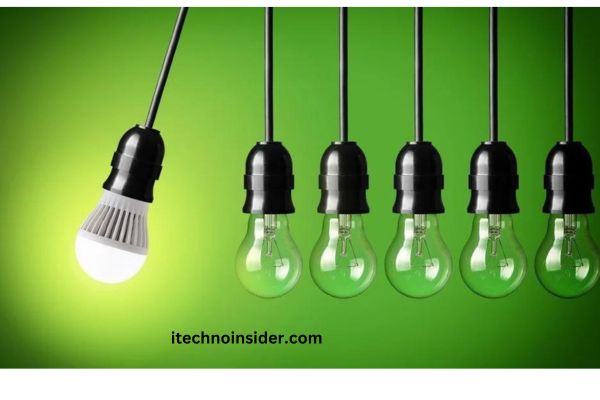
What is an LED?
LED is a solid-state light source that does not burn out like traditional bulbs. It emits visible light when energized by applying a direct current. The LED is based on the principle of electroluminescence: When current passes through semiconductor material, minority charge carriers and majority charge carriers recombine to produce light. Different semiconductor materials have a different band gap, which determines the color of the emitted light.
Why LEDs?
The word LED stands for Light Emitting Diode, and the simple explanation of an LED is that it’s a semiconductor device with one p-n junction. When two different semiconductor materials meet, the p-n junction emits light based on the energy difference between electrons and holes in the material. The specific energy (and thus wavelength of the emitted light) is determined by the particular semiconductor material being used; different materials have various band gaps corresponding to different colors.
The LED chip is protected by a clear epoxy dome which serves as a structural element, and also acts as a lens to focus the light. The LED chip is surrounded by a metal lead frame and other components to complete the circuitry.
Because LEDs produce little radiated heat and don’t contain toxic elements like mercury, they can be placed close to people and sensitive materials. They’re also rugged enough to withstand vibrations and harsh environments, making them perfect for outdoor lighting systems or areas that are difficult to access.
Another benefit of LEDs is that they don’t generate UV rays, which can damage materials or fade dyes and paints. This is a big advantage for stores, art galleries and museums that have materials that need to be protected from UV radiation.
Colors of LEDs
LEDs come in a variety of colors, reflecting the semiconductor elements that are used to create the diode’s energy levels. Today’s LED lamps can produce a broad range of hues using different combinations of red, green, and blue semiconductor elements.
Red colored LEDs use Gallium Arsenide Phosphide (GaAs) while blue LEDs use Indium Gallium Nitride (InGaN). By varying the ratio of indium and gallium in these semiconductor layers, an LED can be made to emit either red or blue light. Often, LEDs are grouped together in the same package and their individual colors can be controlled by rapid switching of the current supplied to each chip, which is known as Pulse Width Modulation.
Cool-White LEDs offer a color that is similar to sunlight, and are useful in many applications, especially those that require more power such as lighting large spaces or outdoor security products. Warm-White LEDs are also common and offer a more natural glow that can be comforting in the home, as well as in commercial or office spaces.
Understanding the effects of different color temperature LEDs is important for design professionals. While architects and interior designers typically give careful consideration to wall paint, flooring, and furniture colors, color theory also affects the way a space feels on a daily basis. Warmer tones encourage the body to produce melatonin at night, while cooler shades of white can help us concentrate in a work environment.
Power of LEDs
LEDs are very efficient light sources, but they still need to be powered. The amount of power they consume is proportional to their current and they can burn themselves out if run too long.
The output of an LED is measured in Lumens (also known as Luminous Intensity). This is the total amount of light emitted over a specified direction. It is calculated by taking the power emitted in the visible light spectrum and weighting it by the luminosity function, which accounts for how sensitive the eye is to each wavelength.
In the picture above you can see the clear epoxy dome that serves as a lens to focus the light, and also the metal leads that connect to the positive (anode) and negative (cathode) sides of the LED. Current flows from the anode to the cathode in an LED and never in the other direction, so if you want to mount an LED in your design it is important to make sure you have it connected correctly.
LEDs are very fast to switch on and off, with the fastest models reaching full brightness in less than a microsecond. They can also be dimmed with either pulse-width modulation or by lowering the forward current. This is why LEDs, especially blue ones, are used to make stroboscopic effects in displays.
Applications of LEDs
LEDs are commonly used as indicator lamps, electronic signs, clock displays and flashlights. They are also used for decorative lighting, such as LED walls in corporate spaces to promote company culture and branding. They are also used in nail curing and disinfection devices for salon and home use. LEDs are increasingly used in horticulture and indoor gardening to provide the specific light spectrum required for plant growth.
LED chips are small, lightweight and consume very little power. They have a long lifespan and do not contain toxic materials, unlike fluorescent and incandescent bulbs. They are ideal for applications that require frequent on-off cycling, as LEDs do not “burn out” but experience a gradual reduction in brightness over time (lumen depreciation).
Colored LEDs can be made from one or more emitters in a single package. Typical colors are red, yellow, green and blue. Other colors can be achieved by using different alloys. The color of the emitted light is determined by the type of semiconductor material used.
White LEDs are often used as a display backlight for LCD screens in mobile phones, TVs and monitors, because they are thinner and more efficient than liquid crystal displays. LEDs are also widely used as indicators and status lights for electronics, such as keyboards and remote controls. Low-power LEDs are used as a replacement for incandescent filament bulbs in candlesticks, nightlights and other decorative lighting.
What Is Wireless Communication?
What is X-Rays?







